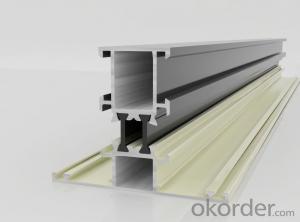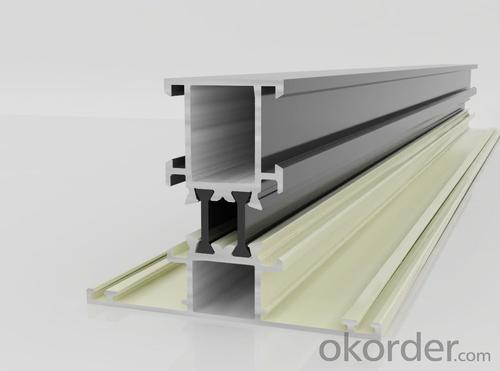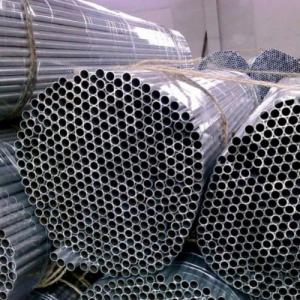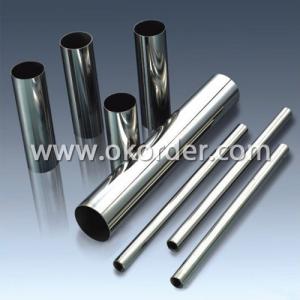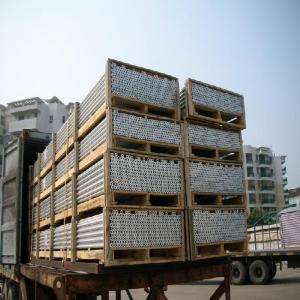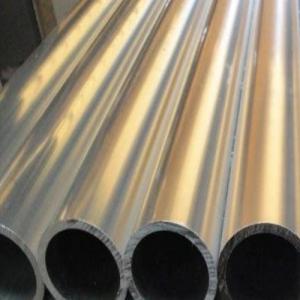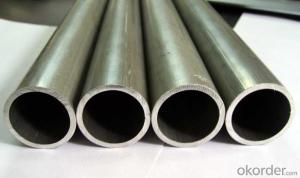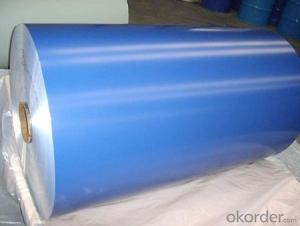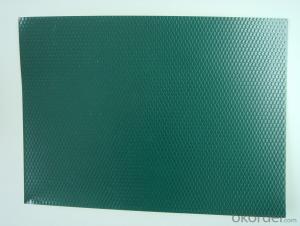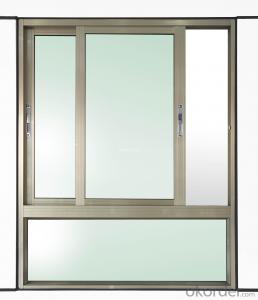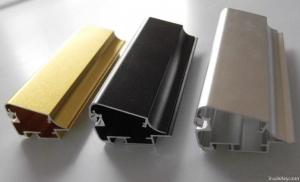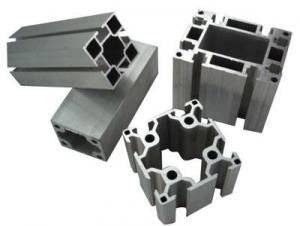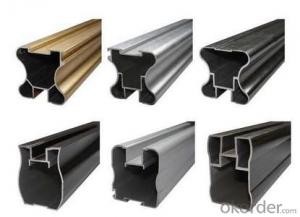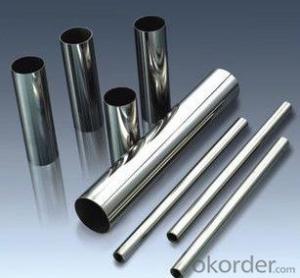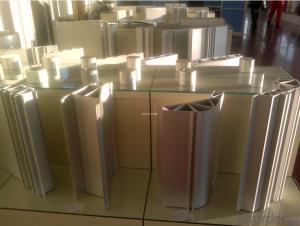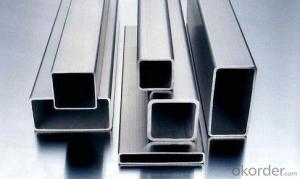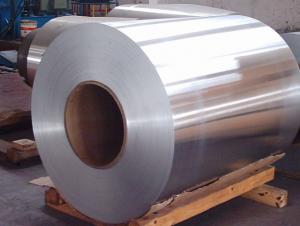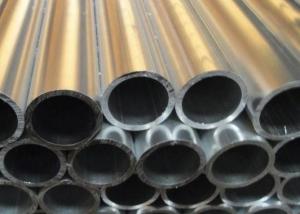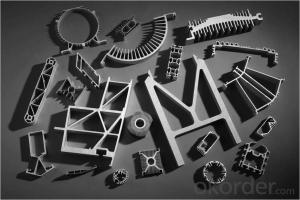Aluminum Pipes - AA6061 Aluminium Profile
- Loading Port:
- China Main Port
- Payment Terms:
- TT OR LC
- Min Order Qty:
- -
- Supply Capability:
- -
OKorder Service Pledge
OKorder Financial Service
You Might Also Like
Product Description:
1 Specifications of Aluminum Profiles 6061-T5
Alloy Number | 6063 6061 6060 and different aluminium alloy |
Temper | T4 T5 T6 or other special status |
Surface available | Mill finish, Anodized, Powder Coating, Wooden transfering, electrophoresis, heat insulation, PVDF, and deep processing |
Thickness: | >0.8mm |
Width: | <300mm |
Standard | GB5237.1-2008 |
Special Specification is available on customer’s requirement
2 Usage/Applications of Aluminum Profiles 6063-T5
Aluminium Profiles are widely used in construction(windows & doors,curtain wall), decoration ( flooring and tiling, kitchen) and industry ( heat sink ).
CNBM produces aluminum profiles which meets the national standard GB5237.1-2008. Our strong quality control term bring you the most-qualified products. And with state-of-the-art equipment, and the state owned company background, we have to say, you will understand why there are so many company choose CNBM to be their supplier.
- Q: Are aluminum pipes suitable for automotive applications?
- Yes, aluminum pipes are suitable for automotive applications. Aluminum pipes offer several advantages such as lightweight construction, excellent corrosion resistance, and high thermal conductivity, making them ideal for various automotive components like radiator pipes, intercoolers, and exhaust systems. Additionally, aluminum pipes can be easily fabricated and have good formability, further enhancing their suitability for automotive applications.
- Q: Which tubs are heated by aluminium tubes? The plastic feels unsafe
- Plastic pipe heating at high temperature, it is prone to explosion, security is not high. Have you heard it is not SOFO Soffer, aluminum heating, very good security.
- Q: What are the different pressure testing standards for aluminum pipes?
- Aluminum pipes commonly undergo pressure testing according to various standards. Some widely recognized standards include the following: 1. ASTM B-241: This standard specifically applies to seamless aluminum-alloy pipes. Its purpose is to assess the pipes' pressure capabilities under different conditions. It outlines guidelines for evaluating the pipes' strength, thickness, and ability to withstand internal and external pressures. 2. ASME B31.3: This standard forms part of the American Society of Mechanical Engineers (ASME) code for process piping. It establishes requirements and guidelines for the design, fabrication, inspection, and testing of aluminum pipes in various industries. It includes specific procedures for pressure testing and criteria for accepting aluminum pipes. 3. ISO 6892: This international standard sets out testing methods for metallic materials, including aluminum. It incorporates procedures for determining the mechanical properties of aluminum pipes, such as tensile strength, yield strength, and elongation. Although not primarily focused on pressure testing, it provides valuable information about the overall strength and performance of aluminum pipes. 4. MIL-PRF-6855: This military standard specifies the requirements for rubber and polyurethane hoses used in aircraft fuel systems. While not exclusively for aluminum pipes, it contains pressure testing standards and criteria that apply to aluminum pipes in aviation applications. It is important to note that these are merely a few of the commonly used pressure testing standards for aluminum pipes. Depending on the specific application and industry, additional standards or guidelines may be necessary to follow. It is always advisable to consult the relevant industry standards and codes to ensure compliance with specific pressure testing requirements.
- Q: How do aluminum pipes handle vibration and shock loads?
- Aluminum pipes generally have good resistance to vibration and shock loads due to their inherent strength and stiffness. The lightweight nature of aluminum helps absorb and dampen vibrations, reducing the risk of damage or failure. Additionally, aluminum's excellent fatigue resistance allows it to withstand repeated shock loads without significant degradation in performance. However, the specific ability of aluminum pipes to handle vibration and shock loads may vary based on their design, thickness, and other factors.
- Q: Now there are two kinds of air-conditioning connections, one is copper aluminum pipe connection, one is pure copper pipe connection, copper aluminum pipe connection quality, OK?
- Copper aluminum pipe connection is easy to leak, it is recommended to use pure copper pipe
- Q: How to obtain hollow aluminum tubes such as drawings by rolling?
- Then what is the shape of the mold? I am a beginner don't understand, but also trouble you to explain in detail the design such as a casting, a concise said hollow workpiece with the same shape, and then put the water into the aluminum molding, after cooling the mold parts get separated! If the workpiece is relatively small, the aluminum bar will be directly turned, drilling is also OK, big can also be a waste of materials!
- Q: What are the disadvantages of using aluminum pipes?
- Some potential disadvantages of using aluminum pipes include their high cost compared to other materials, susceptibility to corrosion, and limited strength compared to other metals. Additionally, aluminum pipes may require specialized welding techniques and may not be suitable for high-pressure applications.
- Q: Are aluminum pipes fire-resistant?
- Aluminum pipes are commonly acknowledged as fire-resistant. They possess a remarkable melting point of 660 degrees Celsius (1220 degrees Fahrenheit) and are not easily combustible. Moreover, when aluminum comes into contact with oxygen, it naturally forms a protective oxide layer on its surface, which effectively prevents further combustion. These exceptional properties render aluminum pipes a suitable option for applications demanding fire resistance, such as in industrial settings or for transporting flammable substances. Nevertheless, it is crucial to recognize that despite their fire-resistant nature, aluminum pipes are capable of transferring heat and conducting electricity. Thus, it is imperative to exercise caution and implement proper insulation when utilizing them in potentially hazardous environments.
- Q: Aluminium tube production and equipment. What are the production techniques and what equipment are needed? How much will it cost?.
- Responsible for the design, development, tooling development and production of new product tubes (thin-walled tubes, rectangular tubes, tubes), as the new product development manager.
- Q: What are the different diameters available for aluminum pipes?
- The manufacturer and specific requirements can cause variation in the available diameters for aluminum pipes. Nonetheless, aluminum pipes typically span a range of diameters starting from as small as 0.25 inches (6.35 mm) and extending to larger sizes like 12 inches (304.8 mm) or even larger. The intended use of the aluminum pipes can also influence the specific diameter options available since various industries and applications may necessitate specific sizes. To ensure that your specific needs are met, it is advisable to consult the manufacturer or supplier and ascertain the precise range of diameters for aluminum pipes.
Send your message to us
Aluminum Pipes - AA6061 Aluminium Profile
- Loading Port:
- China Main Port
- Payment Terms:
- TT OR LC
- Min Order Qty:
- -
- Supply Capability:
- -
OKorder Service Pledge
OKorder Financial Service
Similar products
Hot products
Hot Searches
Related keywords
